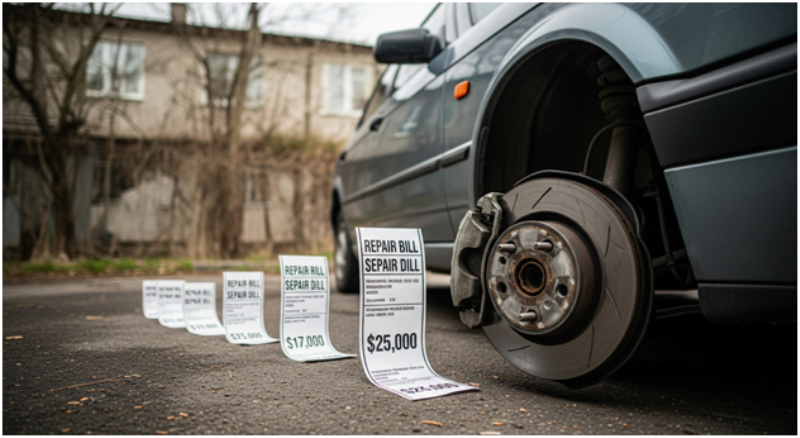
5 Smart Ways to Save Money on Your Next Brake Pad Replacement
Brake replacement is a non-negotiable part of car ownership. It’s a critical safety repair you can’t put off, but the final bill can often come as a shock. While you should never cut corners on safety, there are numerous ways to be a savvy consumer and significantly reduce the cost of your next brake job without compromising on quality.
Being smart about your brake service isn’t about finding the cheapest possible parts; it’s about understanding the process and making informed decisions that provide the best value. Here are five practical strategies to help you save money and keep your vehicle stopping safely.
1. Don’t Wait for the Grinding Noise
Procrastination is the single most expensive mistake you can make with your brakes. Many drivers ignore the early warning signs, like a high-pitched squeal, and wait until they hear a loud, metallic grinding sound.
That grinding noise means the friction material on your brake pads is completely gone, and the metal backing plate is now scraping against your brake rotor. This not only creates a dangerous situation with severely reduced stopping power but also guarantees you’ve damaged the rotors beyond repair. A job that might have only required new pads now definitively requires new pads and new rotors, instantly doubling your parts cost. Acting on the first squeal is the easiest way to prevent a small expense from becoming a big one.
2. Get at Least Three Different Quotes
Don’t just take your car to the dealership or the first corner garage you see. Prices for the exact same job can vary dramatically from one shop to another. The best way to ensure you’re getting a fair price is to shop around.
Call at least three reputable, independent auto shops in your area and ask for a quote. Be specific: ask for the price for a “front brake pad and rotor replacement” for your vehicle’s year, make, and model. This ensures you are comparing the same service across the board. Ask about their hourly labor rate and what type of parts (e.g., ceramic pads, coated rotors) are included in their estimate. You’ll often be surprised by the difference in price for identical work.
3. Consider Supplying Your Own Parts
A significant portion of a shop’s profit on a brake job comes from marking up the cost of the parts. You can often capture these savings for yourself by purchasing the components ahead of time. Reputable brands of brake pads and rotors are widely available online or at auto parts stores, frequently at a lower price than what a shop would charge you.
When you call for quotes, ask the mechanic if they are willing to install customer-supplied parts and what their labor-only rate would be. Be aware of the trade-off: while the shop will warranty their labor, they will not provide a warranty on the parts you bring them. However, if you buy quality components from a manufacturer with a good reputation, the financial savings can often outweigh this risk.
4. Ask “Why” and Decline Unnecessary Upsells
A good brake inspection will assess the entire system, and a mechanic may recommend additional services. This is where being an engaged customer can save you money. Common upsells include a brake fluid flush, a “caliper service,” or a full caliper replacement.
Instead of immediately agreeing, ask clarifying questions. If a brake fluid flush is recommended, ask “Why do I need it?” A good mechanic can show you the contaminated state of your current fluid. If they recommend a caliper replacement, ask them to show you the evidence that it is seized or leaking. While services like cleaning and lubricating caliper pins are good preventative maintenance, they may not be essential if your pads were wearing evenly. Understanding the “why” behind a recommendation helps you distinguish between critical repairs and optional maintenance.
5. Invest in Quality for Long-Term Savings
It can be tempting to request the absolute cheapest parts available to lower the immediate cost. However, this is often a shortsighted strategy. The least expensive brake pads are typically made from softer, organic materials that wear out much faster than their ceramic or premium semi-metallic counterparts.
While you might save $40 on the initial job, you’ll likely have to do it all over again a year or two sooner. This means paying for another set of pads and paying for labor a second time. Investing a little more upfront for a quality set of pads and coated rotors will last significantly longer, perform better, and save you money by extending the time between brake jobs. The most cost-effective repair is the one you do less often.
By following these tips, you can take control of your next brake repair. To better understand what a fair bill looks like, you can find more information in this detailed breakdown of brake replacement costs.

